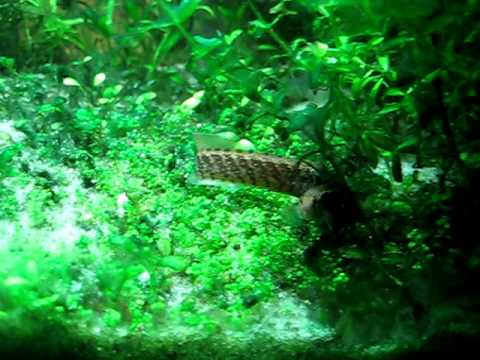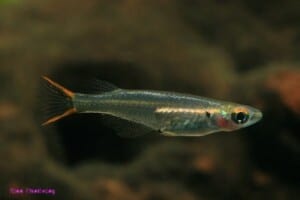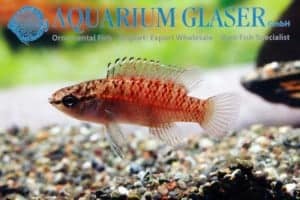The fish
Macrognathus circumcinctus – Half Banded Spiny Eel is a eel-like fish distinguished from other Asian spiny eels by its markings with nearly vertical bands. The body is light brown and covered with cream-colored dots and features nearly vertical bands across the flanks. These bands do not extend all the way down, which has earned the fish the name Half Banded Spiny Eel
The fish is found in shallow rivers, streams, swamps, rice fields and flooded areas. The maximum size is 20 cm. In captivity, they usually remain at 12 cm. The species occurs along the entire Mekong and Chao Phrya basins, in southeast Thailand, Sumatra and Indonesia.
Sexual dimorphism
Full-grown females are more solidly built than males. Sex differentiation in younger animals is not possible.
Behavior
A fairly shy fish, preferring not too bright light. Forages over the bottom in search of small crustaceans, fish spawn and insect larvae. If the fish feels threatened it digs in. Often only its head sticks out of the sand. Combining with conspecifics is possible, although experiences vary. Many specimens socialize in groups, but there are also experiences with individuals that keep chasing other specimens. If the tank is small, choose to keep 1 specimen. In a larger tank a group is the best option. The animals then also show themselves the most.
The Aquarium
A densely planted aquarium with plenty of hiding places and shaded areas. Do not keep together with too small fish (<3 cm), as they will be mistaken for food. A fine sandy bottom is a must, as the fish dig into it. Many sources mention that the animals benefit from a salt addition, as they are said to be brackish water animals. This, however, a fable: they are 100% freshwater fish. Be careful with very small fish because anything that fits in their mouths will be eaten.
Diet
Artemia and mosquito larvae. Both live and frozen food. Dry food is usually not eaten.
Breeding
A number of breeding cases are known. The exact trigger for mating is unknown, but is probably related to the administration of sufficient live feed and water changes. These conditions probably simulate the rainy season, which in nature initiates mating.
Author
Patrick de Pijper
Copyright images
Nonn Panitvong – Siamensis.org








